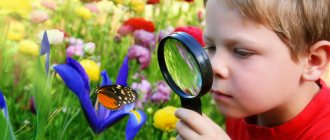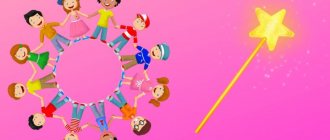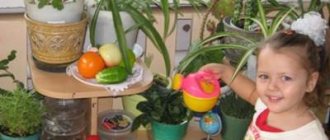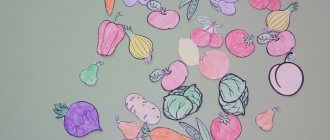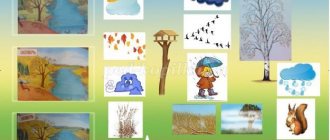Neshataeva Elena Vasilievna
Geography teacher
MSKOU VIII type Krasnovishersk
Intellectual game “Nature Experts”.
Goals of the game:
- Development of students’ cognitive activity, intelligence, broadening their horizons.
- Fostering love and respect for living nature.
There is just a temple, There is a temple of science, And there is also a temple of nature - With forests stretching out their hands Toward the sun and winds Open to us in the heat and cold, Come here, be sensitive with your heart, Do not desecrate its shrines.
Good afternoon, dear guests, children! We are at the game “Nature Experts”. It was the game that brought us all together today to think again and reflect on such an important issue as nature conservation. To protect nature, you need to know it.
You know many animals and plants well, you have heard or read about others, you have seen others on television, and you will meet some today. And so let's start our game.
The main characters will be two teams.
Team presentation. "TRANSFORMERS" "KNOW-ALLS"
Jury:
1. “Warm-up” competition
There are 15 questions, you need to answer them as quickly as possible. For each correct answer the team receives 1 point.
Questions for team #1
- What is the name of the herb for 99 diseases. (St. John's wort)
- How many legs does a spider have? (eight)
- Will hares be born blind or sighted? (sighted)
- What birds hatch chicks three times a year? (sparrows, buntings)
- Who picks apples with their backs? (hedgehog)
- Is a penguin a bird or not? (Yes)
- What does elk lose every winter? (horns)
- Which berry is red, white and black? (currant)
- Who's teeth grow every day? (beaver, hare)
- Which tree has a white trunk? (birch)
- Which bird flies the highest? (eagle)
- Who sleeps upside down? (bat)
- When is the first thunderstorm most likely to occur? (in May)
- What happens to a bee after it stings? (she is dying)
- What animal loves raspberries? (bear)
Questions for team #2
- What bird throws eggs into other people's nests? (cuckoo)
- The name of which plant tells where it grows? (plantain)
- Who runs with their hind legs forward? (hare)
- Bloodthirsty predator of our forests. (wolf)
- What flower starts summer? (bell)
- Before what weather do birds stop singing? (rain)
- What is the largest bird in the world? (ostrich)
- An animal that is very similar to a cat. (lynx)
- What bird can talk? (parrot)
- Do birds winter in birdhouses? (no it's very cold there)
- Is a tree a symbol of Russia? (birch)
- Who has the worst eyesight? (mole)
- It looks like a lined notebook. (zebra)
- Which animal runs well, jumps and boxes well? (kangaroo)
- Which tree gives water to woodpeckers in spring? /birch/
Well done guys, you know a lot, you were able to answer so many questions. Tell me, where can I learn about interesting plants and animals? Yes, you can find this out in encyclopedias.
2.competition “Troubles from a little party”
You can score 3 points for a correct answer.
Guess from the 1st clue.
1. Bonfire
- This serves as protection from predators.
- Saves from hunger.
- It is bred by tourists and reindeer herders.
- You can boil water and cook food on it.
2. Tent
- Essential for tourists going on a hike for several days.
- Helps hide from animals and insects.
- Protects from cold, wind and rain.
- You can hide from the hot sun.
3. Globe
1. The item is round in shape, but is not used in the gym.
2. Motley, spinning.
3. With this item you can travel without having money. This is what its owner does.
4. Lives in the geography room.
4 Blue whale.
- A mammal that gives birth to live young and feeds them with milk.
- Listed in the Red Book.
- These animals include: beluga whale, humpback whale, lied whale, sperm whale, killer whale.
- This is the largest animal that has ever existed on earth.
5. Tourism
- Kind of sport.
- There are mountain, water, ski.
- Group hike.
- A type of travel undertaken for leisure.
6. River
- Water flow of considerable size.
- You can admire her.
- Has a source, mouth.
- It can be mountainous or flat.
Since 1600, 150 species of animals and birds have become extinct on our planet, more than half in just the last 50 years. The Red Book maintained by the International Union for Conservation of Nature now lists about 100 species of animals and birds that are in distress.
37 species of birds are listed in our Red Book of the Perm Territory. Today we will get acquainted with some species.
3. competition “Birds of the Red Book of the Perm Territory”.
I'm asking a question. You pick up the card with the desired number. For each correct answer you get a point. So, let's start the game. Listen carefully.
Gray owl -
Large head, smoky gray color. The eyes are yellow with dark stripes around them. A black spot under the beak, similar to a beard, is how this species got its name. Hunts in the evening and at night mainly on small rodents, sometimes on squirrels and small birds.
Great Sparrow Owl
- a very small bird of prey, weight - 55-80 g. Females are larger than males. The head is small, round, slightly flattened, there are no “ears”, and there are short white “eyebrows” above the eyes. It hunts during the day, at dawn, and at dusk. Its food mainly consists of rodents: lemmings, voles, wood mice, as well as small passerine birds. In winter, they like to visit bird feeders, where tits, bullfinches, and sparrows lie in wait.
Great curlew -
The bird is easily recognized by its long, slightly downward-curved beak. The beak is long, sharp, and curved, helping to find prey in the damp, soft bottom. Legs are elongated.
Oystercatcher
- a large bird with a long orange-red beak and black and white plumage. The legs are short pink-red. Runs and swims well. A fussy and noisy bird. The main cry, emitted both on the ground and in the air, is the far-audible trill “quirrrrrrr”. It feeds on mollusks, worms, and insects. In search of food, it moves along the shore in shallow water, sticking its beak into the water or sand.
GCD summary. Ecological quiz “Nature connoisseurs”
Tasks:
• Summarize children's knowledge about animals, plants, seasons, and nature conservation. • Develop logical thinking and speech. • Activate attention and memory. • Teach children to follow the rules of the game. • Develop the ability to listen carefully to the teacher and peers, develop a sense of responsibility to your team, and the ability to work together. • Foster a caring attitude towards nature.
Preliminary work:
Before the start of the lesson, the children of the group are divided into two teams. Children decide what they will name their teams, choose captains, and discuss emblems. Getting acquainted with the Red Book, reading the works of M.M. Prishvin, looking at illustrations about nature.
Progress of the lesson:
The teams enter the hall to the music. They take their seats at tables with pre-prepared emblems. A small number of children participate in the quiz; all children sit at tables, hold hands and close their eyes for 1 minute (psychological mood). — To conduct our environmental quiz “Nature Experts” you will need a fair jury; the presenter offers to choose a jury from among the guests. - ATTENTION! ATTENTION! Let's start our environmental quiz: “Nature Connoisseurs”.
Let's remember the rules of our game:
You cannot give hints to teams during the game and interrupt your comrades. Only those who raised the flag first can answer questions. For each correct answer, the respondent receives a point. The one who scores the most points at the end of the quiz is the winner. If the team answering the question finds it difficult or gives the wrong answer, then the other team, that is, the opponents, answers. You need to be very careful and patient. Pay attention to the table in front of you, there is a top prepared on it, with an arrow, the arrow will indicate which team will have to answer first. And so we begin!
Leading:
There is a wonderful world - it’s all around And you just have to want How nature will suddenly come to life And everyone will want to fly like a bird The sound of a curly birch tree in the forest And I invite you to plunge into nature, into the wild world and beauty.
Presentation 1. (Appendix No. 1).
Slide 1. Our quiz will be held under the title “Nature Experts”. Slide 2. Our planet is like a big beautiful house. Slide 3. She pleases us with morning, gentle sunrises, colorful farewell sunsets, landscapes of our native nature; Slide 4. It fascinates us with its huge, deep and endless oceans and expanses of seas. Slide 5. It surprises with high mountains, steep cliffs and hills, Slide 6. It delights with dense, fragrant groves, pine forests, and mighty oak forests. Slide 7. Earth is a planet of harmony. Everything on it is proportionate and interconnected. Slide 8. The nature of the planet is perfect. Our Earth has been called a mysterious planet and mysterious. Slide 9. However, for sensitive hearts she reveals her deepest secrets. We learn and explain natural phenomena, the secret of the birth of a new day, the diverse world of living and nonliving things on the planet. Slide 10. It’s up to you, our future generation, to keep the planet as beautiful as it is.
I – Greetings of teams.
Greetings from the “Pure Spring” team
The expanses of the beloved Motherland are wide, Every bush and moth is precious. Let us preserve the beauty of nature, Let the “Pure fontanelle” murmur and sparkle!
Greetings from the Forest Defenders team
If there is a lot of forest, don’t destroy it, If there is a little forest, take care of it, If there is no forest, plant it. We plant and grow the forest, we will protect it, we will not give offense to anyone.
II Warm-up. With children “It happens - it doesn’t happen”
Ice drift in summer (doesn't happen) Leaf fall in summer (doesn't happen) Rain in summer (doesn't happen) Dew in winter (doesn't happen) Frost in spring (doesn't happen) Thunderstorm in summer (doesn't happen) Snowstorm in summer (doesn't happen) Rainbow in summer (doesn't happen) Hail in summer (doesn't happen) Buran in summer (doesn't happen) Frost in winter (doesn't happen) Fog in autumn (doesn't happen) Drops in summer (doesn't happen) Frost in summer (doesn't happen) Frost in summer (doesn't happen) Puddles in winter (doesn't happen)
III "Assemble the puzzle"
Children are offered cut-out puzzle pictures. The team that is judged is the one that completes the puzzle faster and tells what is depicted there.
IV. "Question and answer"
1. The longest necked animal. (Giraffe) 2. Who carries the baby in the bag? (Kangaroo) 3. A bird that cannot fly and is not afraid of frost? (Penguin) 4. Long-eared coward. (Hare) 5. Who sleeps upside down? (Bat) 6. Which snake has a hood? (Cobra) 7. Which bird does not build a nest? (Cuckoo) 8. The largest animal living on land. (Elephant) 9. The largest animal living in the ocean. (Whale) 10. What animal builds dams on rivers? (Beaver) 11. Who carries his house on himself? (Turtle, snail) 12. Which bird has the most beautiful tail? (The peacock) 13. A striped relative of the cat. (Tiger) 14. What animal is called the ship of the desert? (Camel)
V. Outdoor game “Swamp”.
Draw two lines from one another at a distance of 7–10 steps. Between them, 10-12 circles are drawn with chalk at a distance of 25-30 cm from each other - these are hummocks, and the circle is a swamp (you can draw a line). The players' task is to move over the hummocks from one bank (line) to the other. Children take turns jumping on both legs from hummock to hummock. Anyone who jumps past a hummock into a swamp gets his feet wet and leaves the game (dries out on the shore). The winners are those who make it safely from shore to shore.
VI. "Mystery box": a riddle about bread.
At first I grew up free in the field, In the summer I blossomed and made ears, And when I threshed, I suddenly turned into grain. From grain to flour and dough. I took a place in the store.
VII. – Choose the right behavior in the forest
Presentation 1. (Appendix No. 1 continued).
Don’t break branches, don’t mutilate trees, don’t tear up a blade of grass or a leaf in vain. You can play in the forest: tear leaves, weave wreaths, collect huge bouquets. Just think, there are already a lot of them in the forest. Finally, you can make noise, shout, run, and most importantly, you won’t bother anyone! Try not to make noise, otherwise the forest will be afraid, hide, and you will not learn a single secret. A bug-eyed frog, a creeping snake, a clumsy toad, and nasty caterpillars can be driven away, but it would be better if they were not there at all. All kinds of animals are important - all kinds of animals are needed. Each of them does their own good for nature. Plant as many trees as possible so that we can breathe clean air. When relaxing in the forest, do not remove garbage from the grass, but leave it there. Now put nature protection signs where children do wrong (the rule is accompanied by a picture).
VIII. Literary break: children read poems about nature (Appendix No. 2).
Summing up, announcing the overall score. Rewarding.
- Dear Guys! I was very pleased that you took part in our environmental quiz “Nature Experts”. I hope that you will love nature even more, show interest, and protect it. And now, guys, let’s stand in a semicircle and perform “Hymn to Nature” “Home Earth”
Wise nature teaches us at any time of the year. Birds teach us to sing, Spiders teach us patience, Bees in the field and in the garden teach us how to work. Snow teaches us purity, Teaches the sun kindness. You need to learn from nature all year round. After all, her forest people teach strong friendship.
Appendix No. 2. Poems.
What is a forest? What is a forest? Pines to the skies, Birches and oaks, Berries, mushrooms... Animal paths, Hills and lowlands, Soft grass, An owl to bitch. Silver lily of the valley, clean, clean air and a spring with living spring water.
What is a meadow? What is a meadow? A carpet of grass all around. Decorative corollas of flowers, sonorous grasshoppers. Moths are playful, Beetles are leisurely. With the sweet honey of the bee, the song of the quail. Mint aroma, Summer's gentle look And to the white flies With a shepherd's pipe.
What is a field? What is a field? For horses there is freedom, a strip of arable land, panicles of oats. Ripe wheat is earing in the field And the rye is rustling there, prickly like a hedgehog. The wind whistles in the field, the mouse is looking for grain, the lizard is scurrying about, the sun is rising. Only the bird knows where its border is, but you go - you won’t find the edge. What is a river? What is a river? Clouds on the water. There are willows above the water. Spring floods. Perch, ruff. Water lilies, reeds. Foam on the sand, Boat in the distance. There is a duckling in the nest, and a beaver in the house. There's a crayfish under a snag, There's a fisherman on the shore.
What is a garden? What is a garden? Pink outfit. Apple trees are blooming, Birdhouses are singing. Blue drops, swing balls. Rose hips, Gooseberries. Golden pears, fluffy peaches. The rustle of falling leaves, the autumn coolness. Bullfinch family, Favorite bench.
What is a vegetable garden? What is a vegetable garden? Round dance of vegetables. Melons are sweet, Tomatoes are smooth. With strawberry beds, rakes and shovels. Watering can with rain. Snail under a leaf. And underground a mole made a move. Just for the sake of order, Watchman Vanyatka is an angry scarecrow stuffed with straw.
What is the sea! What is the sea? Seagulls in the open air. Giant rocks, Cold fogs. Three-story waves, brave sailors. Sharks are toothy, whales are big-headed. Lumps of underwater stones, strange fish. Corals, octopuses, Jellyfish and lampreys, And the bottom is dark, Like in the movies...
What are mountains? What are mountains? Talking with the wind. Snowy peaks, menacing avalanches. The paths are rocky, the antelopes are fast, the abysses are bottomless and the caves are dark. Thorn bushes, Snakes and lichens, Climbing goats, And diamonds underground. Rivers are like crystal, In the blue haze of the distance, Where the eagle soars - Guardian of the high mountains.
Appendix No. 1. Presentation
Author: Rodionova Natalya Sergeevna, teacher, preschool educational institution “Svetlyachok”, Khvalynsk, Saratov region, Russia
The article is published in the author's edition

